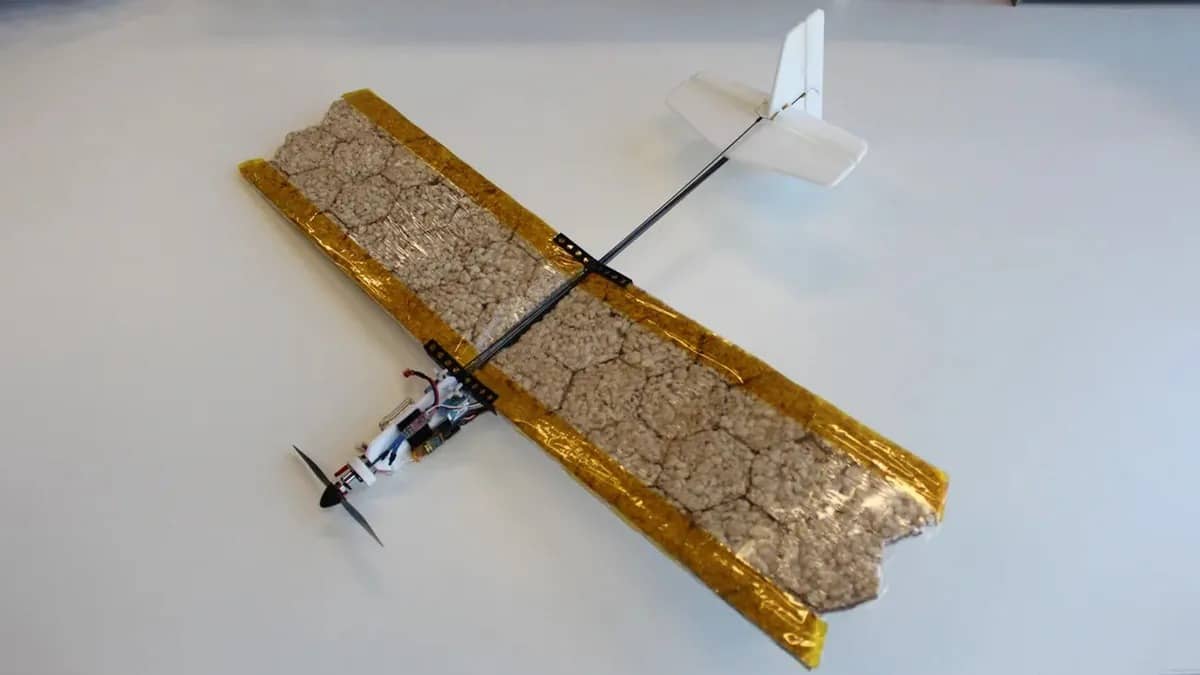At the international conference IEEE / RSJ on robots and intelligent systems, held in Kyoto last week, researchers from theEPFL, the Federal Institute of Technology Lausanne, presented an ingenious creation: an edible drone made of rice cakes. No, I'm not kidding. And it is no small thing.
The article written by Bokeon Kwak, Jun Shintake, Lu Zhang e Dario Floreano from EPFL is called “Toward edible drones for rescue missions: designing and flying nutritional wings”. It describes an edible drone capable of “increasing its food payload by 30 to 50% of its mass.”
Nutritional wings
The edible drone was designed byingenious institute to be used in rescue missions where people are stranded and need food. The team believes the drone could be used to deliver food to people in disaster areas or to soldiers in combat zones.
Do you really need it? In fact, the drone could be a game-changer for those who don't have access to food. Current drones developed for food delivery may not be able to do the job efficiently. While they have sufficient range for use within cities, they may not be able to hold up over long distances or in remote locations.
The edible drone, on the other hand, is not only able to reach a person, but it delivers food immediately, ensuring less waste. When a drone is asked to carry something, most of what is moved is the drone. Most aircraft carry about 30% of its mass as a payload.

This is why the idea of manufacturing an edible wing could be a winning one
Puffed rice is a great alternative to polypropylene foam for drones. It is strong and lightweight, very similar to expanded polypropylene (EPP), commonly used as a drone wing material.
Rice is also "cheap, convenient, easy to laser cut," while having a "respectable" calorie density, the researchers say. “Achieving sufficient mechanical properties while maintaining low weight (with food materials) was the main design criterion of the edible wing. We can expand the design criteria to contain more calories by using fat-based materials such as edible wax; fats have more calories per gram than proteins and carbohydrates,” Kwak said.
How is the edible drone created?
The first step is to laser cut round rice cakes into hexagons, so they can stick together more easily, to make the wing. The gelatin acts as glue, and after drying, the wing is packed in plastic and molded to ensure it does not fall apart in damp or wet environments.
Interestingly, the size of the edible wing depends on nutritional needs. A wingspan of approximately 70 centimeters will be sufficient to provide 300 kcal, the equivalent of a breakfast portion.
Next steps
Of course, you can't eat the whole drone: the structure and tail surfaces are made of carbon fiber and foam. By bringing the "nacelle" back, however, these drones (which can fly at about 10 meters per second) can be equipped with a new edible wing and sent on a mission again.
The researchers are now working on structural components, such as the wing control surfaces, which will be “made of edible material by printing or 3D food molding,” Kwak says. Other aspects that will be considered are an edible/water resistant coating on the edible food surface and degradation testing of the edible wing.
A godsend 2.0.


